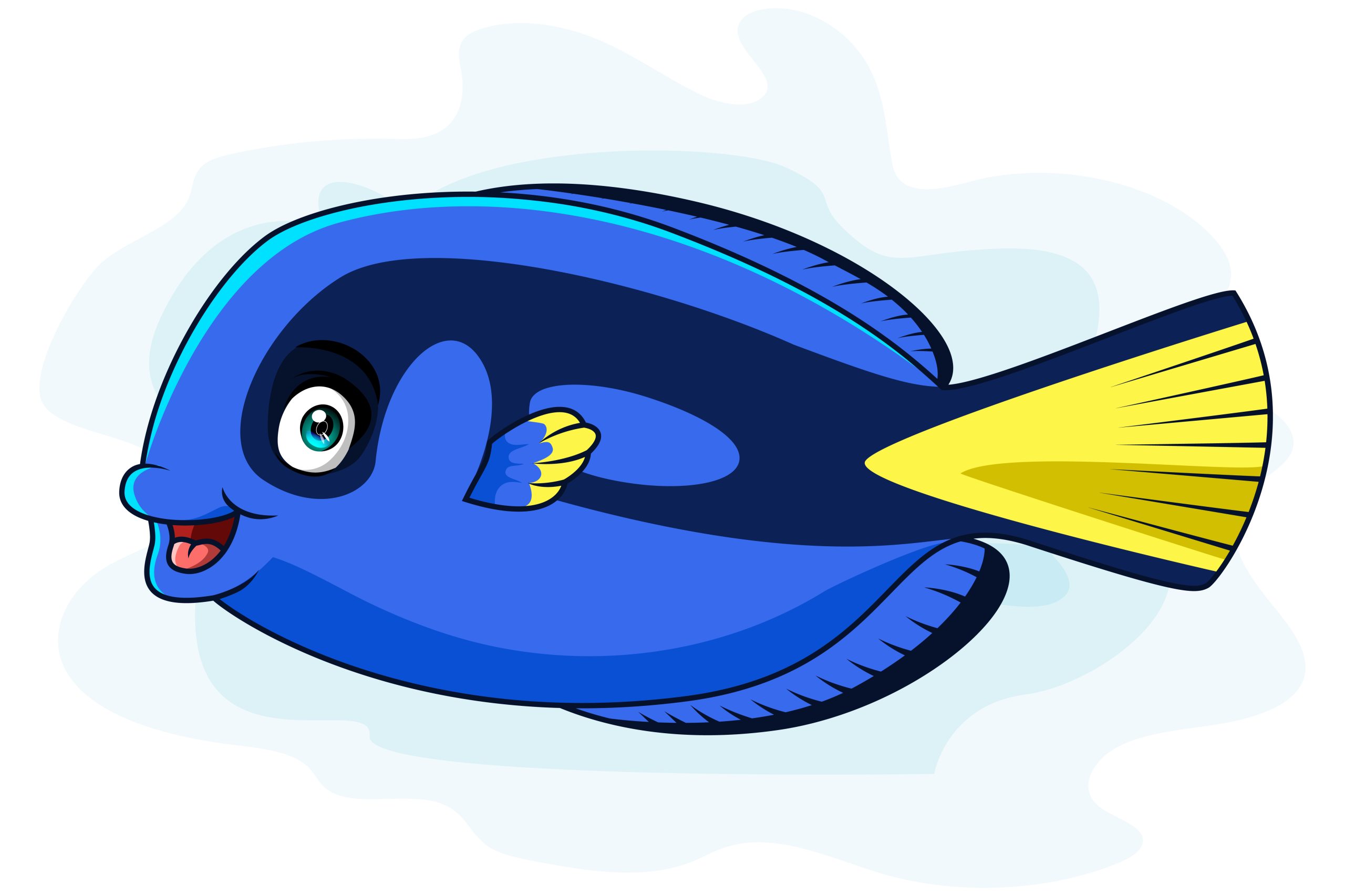Dory, the lovable blue tang fish with short-term memory loss, captured the hearts of audiences in the animated film “Finding Nemo.” While Dory’s character brought humor and charm to the big screen, the real-life blue tang fish is equally fascinating. In this article, we delve into the world of Dory and her species, exploring their unique characteristics, habitats, and conservation status.
Meet Dory: The Blue Tang Fish
In “Finding Nemo,” Dory is depicted as a forgetful yet endearing companion to the film’s protagonist, Nemo. Blue tangs, scientifically known as Paracanthurus hepatus, are brilliantly colored fish with vibrant blue bodies and striking black markings. They are native to the Indo-Pacific region and are often found in coral reefs.
The Allure of Coral Reefs: Dory’s Habitat
Blue tang fish, including Dory, are typically found in shallow, tropical waters near coral reefs. Coral reefs provide them with a bountiful food source and protection from predators. These reefs are essential ecosystems that support a diverse range of marine life.
The Necessity of Community: Social Behavior
Blue tang fish, like many species in the ocean, exhibit social behavior. They often form schools, which not only provide protection from predators but also enhance their chances of finding food. In the film, Dory’s friendly and outgoing personality reflects the social nature of blue tangs.
Fascinating Facts about Blue Tangs
Blue tang fish have several intriguing characteristics:
- Scalpel-Like Spines: Blue tangs possess sharp spines near their tail, which they can use defensively when threatened.
- Diet: Their diet primarily consists of algae, which contributes to the health of coral reefs.
- Reproductive Habits: Blue tangs engage in mass spawning events, where numerous individuals release their eggs and sperm into the water simultaneously.
Conservation Concerns: Protecting Dory’s Home
As with many marine species, blue tangs face threats due to human activities. Overfishing, habitat destruction, and climate change impact coral reefs and the delicate balance of marine ecosystems. Conservation efforts aim to protect these ecosystems and the diverse marine life they support, including Dory’s species.
Aquaculture Efforts: A Responsible Approach
The demand for blue tangs in the aquarium trade has led to increased aquaculture efforts. Responsible aquaculture helps reduce pressure on wild populations, as captive-bred fish can be introduced into the aquarium trade. It is essential for aquarists to source fish from reputable and sustainable sources to support conservation efforts.
Celebrating Dory and the Blue Tang Fish
Dory, with her endearing personality and captivating adventures, brought the blue tang fish into the spotlight and inspired curiosity about their real-life counterparts. Blue tangs, like Dory, are intriguing creatures that contribute to the vibrant tapestry of life in coral reefs. As we celebrate the charm of Dory and her species, let us also recognize the importance of protecting their natural habitats and the delicate marine ecosystems they call home. By understanding and appreciating these enigmatic fish, we can foster a deeper connection with the wonders of the ocean and work together to ensure a sustainable future for all marine life, including our beloved Dory.




